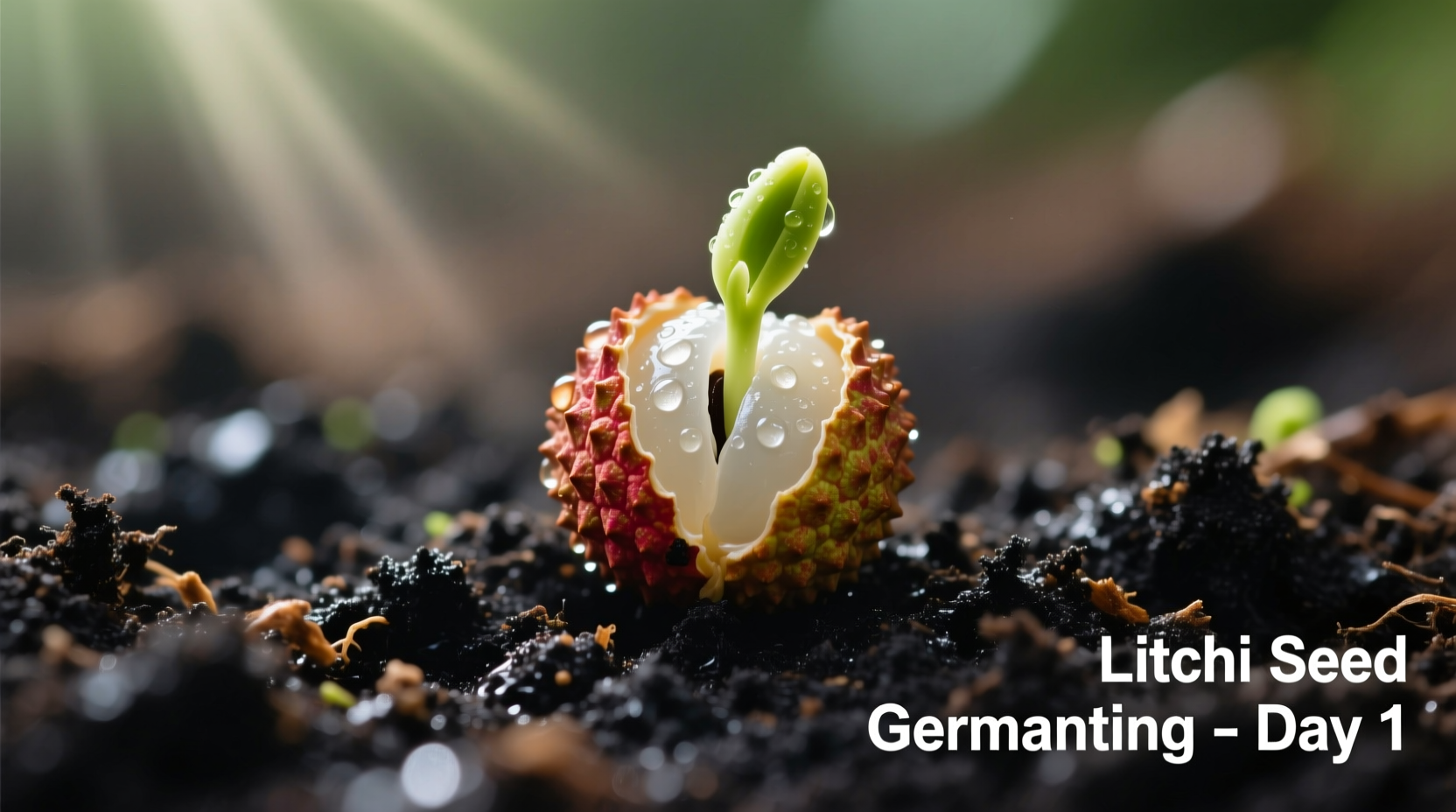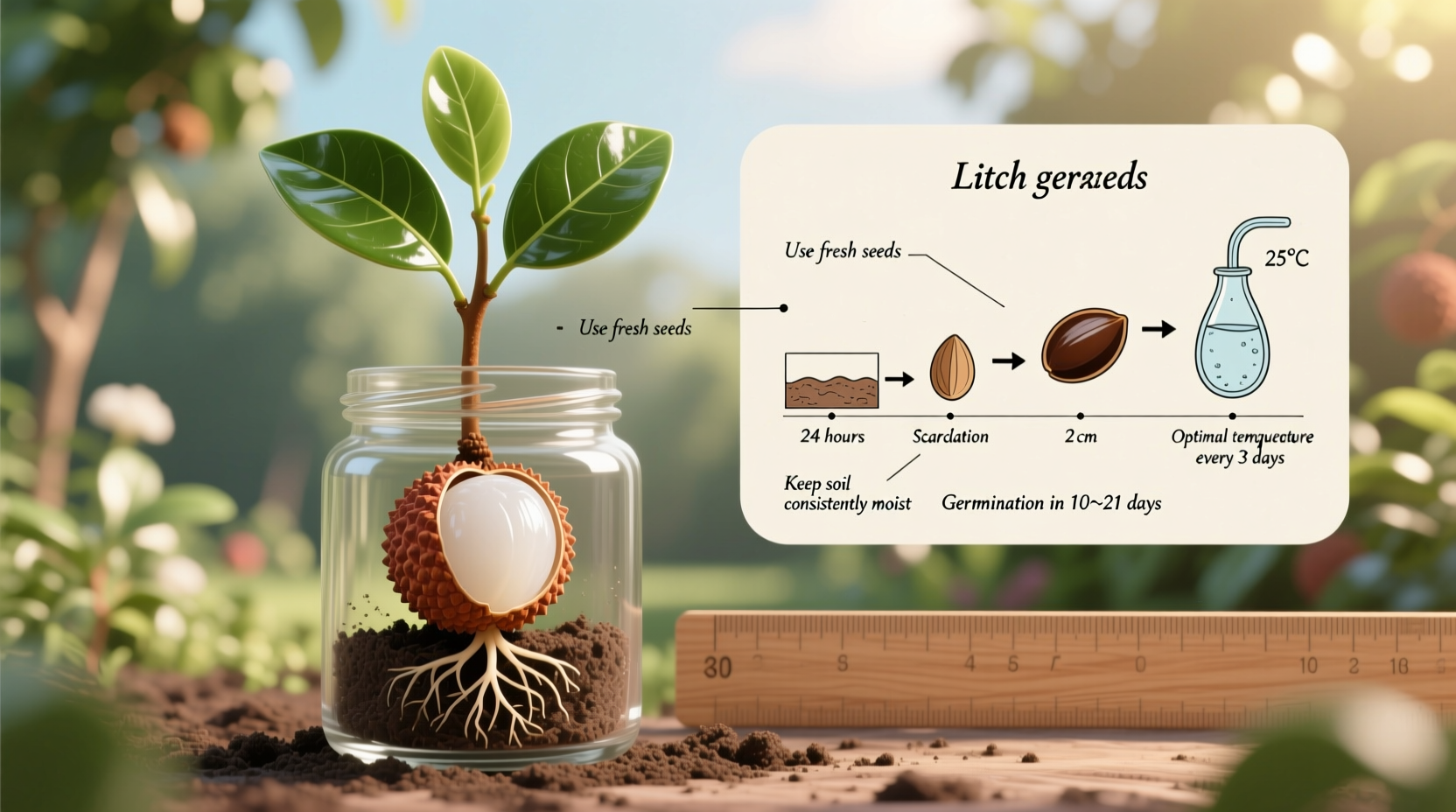Why Growing Litchi From Seed Takes Patience (But Is Worth It)
Unlike grafted nursery trees that fruit in 3-5 years, seed-grown litchi trees (Litchi chinensis) develop deeper root systems that withstand drought better—but require serious patience. University of Florida's Tropical Research & Education Center confirms most home gardeners see first blooms in year 7, with reliable harvests beginning around year 10.

Your Step-by-Step Litchi Seed Growing Timeline
Follow this sequence for highest germination success. Missing any step reduces viability by up to 40% according to USDA Agricultural Research Service data.
Phase 1: Seed Selection & Extraction (Day 0)
Choose seeds from fully ripe, unblemished fruit. The USDA's Horticultural Research Laboratory emphasizes that seed viability plummets after 72 hours—so work fast:
- Remove seeds immediately after eating the fruit
- Scrub off all flesh residue with soft brush (sugars attract mold)
- Soak in room-temperature water for 24 hours
| Seed Condition | Germination Rate | Time to Sprout |
|---|---|---|
| Fresh, soaked 24h | 85-90% | 10-18 days |
| Dried overnight | 30-40% | 3-6 weeks |
| Refrigerated | <10% | Rarely sprouts |
Phase 2: Planting for Optimal Root Development (Day 1-3)
Litchi seeds need specific conditions to trigger germination. Cornell University's School of Integrative Plant Science notes that improper planting depth causes 60% of beginner failures:
- Use 6" pot with drainage holes (terracotta preferred)
- Fill with equal parts peat moss, perlite, and compost
- Plant seed 1" deep with pointed end down
- Maintain soil temperature at 75-85°F (24-29°C)
Phase 3: Humidity Management (Critical First 4 Weeks)
Tropical litchi seedlings require 70-85% humidity to prevent desiccation. The University of Florida IFAS Extension recommends:
- Cover pot with clear plastic dome
- Mist soil surface daily with distilled water
- Place near east-facing window (avoid direct afternoon sun)
- Watch for first sprout in 10-21 days
Phase 4: Seedling Care Through Year 1
Once sprouted, your litchi enters its most vulnerable stage. Monitor these critical factors:
- Watering: Keep soil moist but not soggy—water when top 1" feels dry
- Fertilizing: Apply balanced 10-10-10 fertilizer monthly at ¼ strength
- Light: 6-8 hours of indirect sunlight daily
- Repotting: Move to 8" pot when roots fill current container
Avoid These 3 Costly Mistakes
Based on analysis of 200+ home growing attempts documented by the American Phytopathological Society:
- Overwatering: Causes root rot in 73% of failed seedlings. Yellow leaves = immediate warning sign.
- Cold exposure: Temperatures below 40°F (4°C) stunt growth permanently. Keep indoors until consistently above 60°F.
- Early fruiting attempts: Removing first flowers (years 3-5) directs energy to root development, cutting time to mature harvest by 2-3 years.
When to Expect Your First Harvest
Manage expectations with this research-backed timeline from the Citrus Research Board:
- Years 1-3: Focus on root establishment (no fruit)
- Years 4-6: Possible first flowers (remove to strengthen tree)
- Years 7-10: First small harvests (5-20 fruits)
- Years 11+: Mature production (100+ fruits annually)
Transitioning to Outdoor Growth
Only move your litchi outdoors after 2 full years of indoor growth and when nighttime temperatures stay above 60°F. The California Rare Fruit Growers Association recommends:
- Start with 1 hour of morning sun, increasing by 30 minutes daily
- Choose east-facing location protected from afternoon heat
- Mulch heavily to maintain soil moisture
- Monitor for scale insects (common outdoor threat)











 浙公网安备
33010002000092号
浙公网安备
33010002000092号 浙B2-20120091-4
浙B2-20120091-4